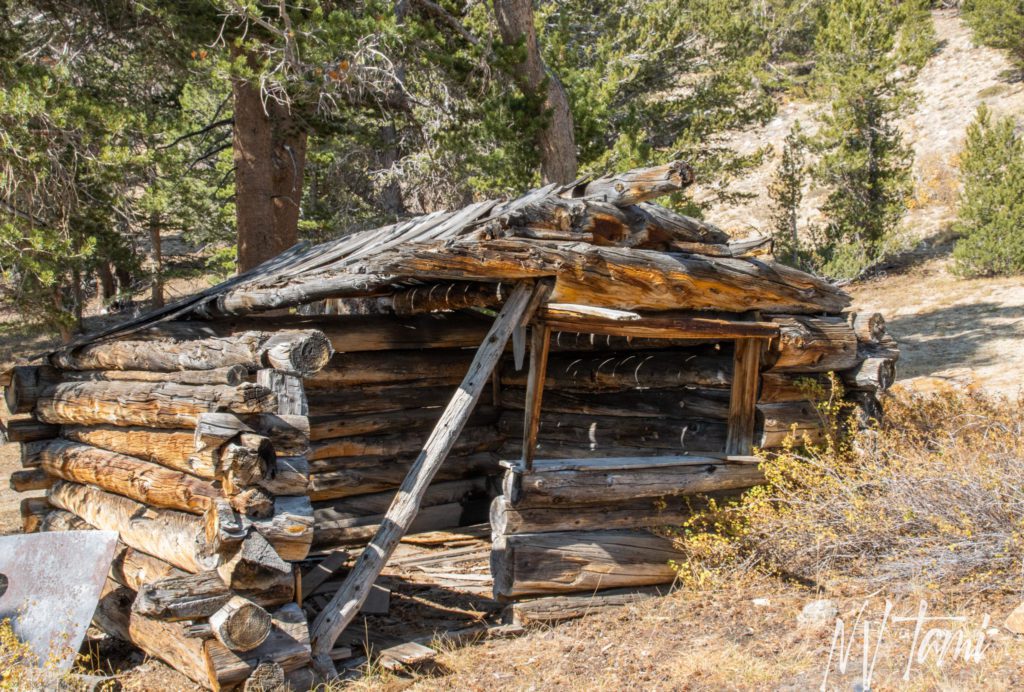
Ward Mining Camp is a hidden treasure in Mono County, California. The isolated mining camp was discovered one hundred thirty years ago. Sheltered by the trees, many drive past without knowing of the stamp mill and a trio of log cabins.
Ghost Towning
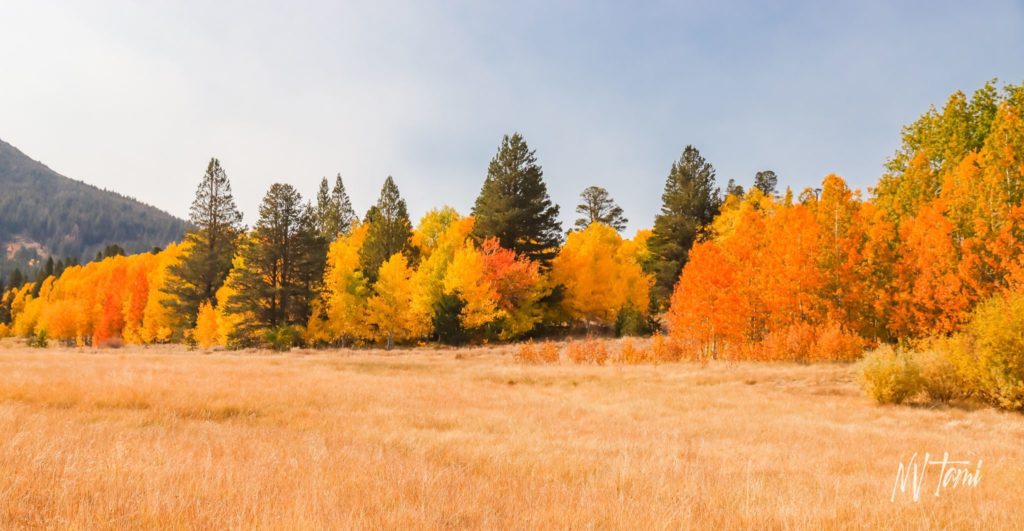
It never ceases to amaze me that you can explore an area multiple times and there is always more history to discover. Dunderberg Mill and Munckton are among my favorite trips. Nothing beats the fall colors of the Eastern Sierras in the Conway Summit area.
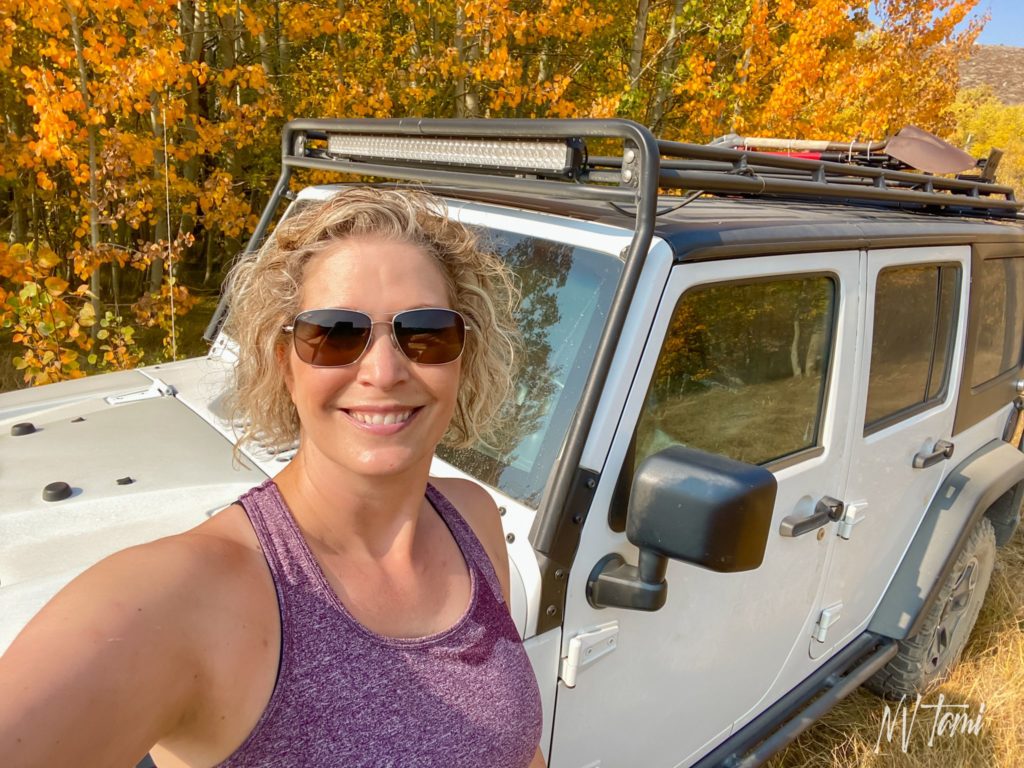
Munckton, Fall 2020
On other visits, I traveled to Dunderberg Mill and Upper Sinnamon Meadows but didn’t go beyond the bricks at the mill site. On one trip, I began to hike up the overgrown road while my travel partner stayed below. The hike seemed like a good idea until thoughts of mountain lions started running through my mind. Thinking the road dead-ended in the brush and not wanting to run into a very large cat, I turned back.
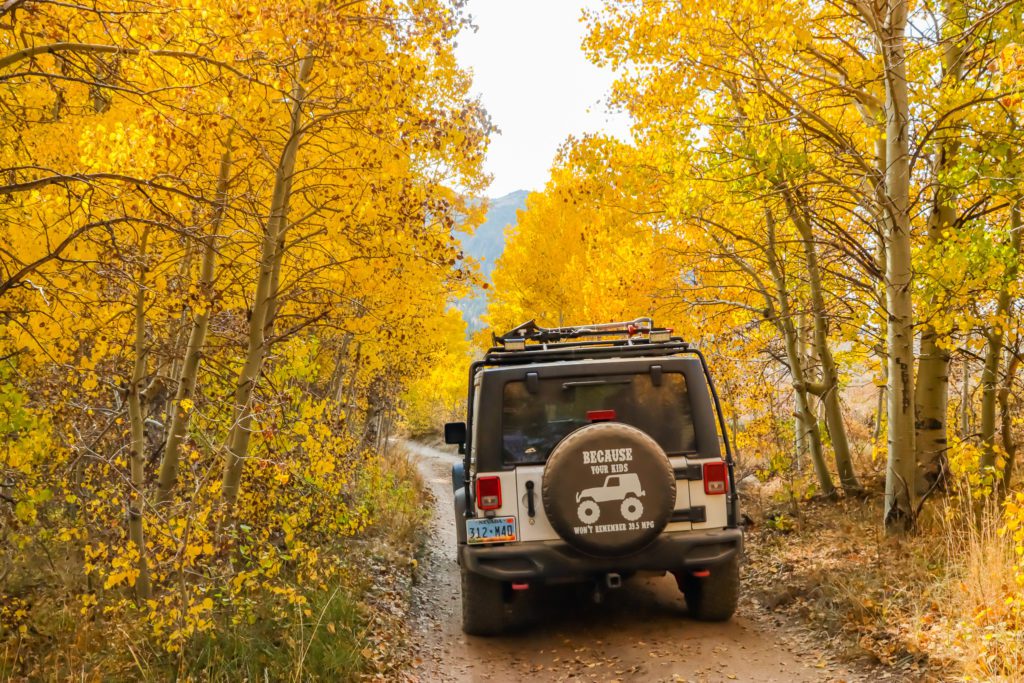
Jared of Great Basin Exploring and I had been talking about heading out to explore and fly our drones. We decided it was a good time for fall leaves around Conway Summit. Friends Austin, Nevada Expeditions, and Shonna decided to join us on the trip. I should have warned Jared what the three of us are like together. Our first stop was for gas in Bridgeport where he caught us mid-conversation about a museum displaying Custer’s codpiece, sized small. I was afraid Jared would question the sanity of hanging out with us and bolt, but he stayed.
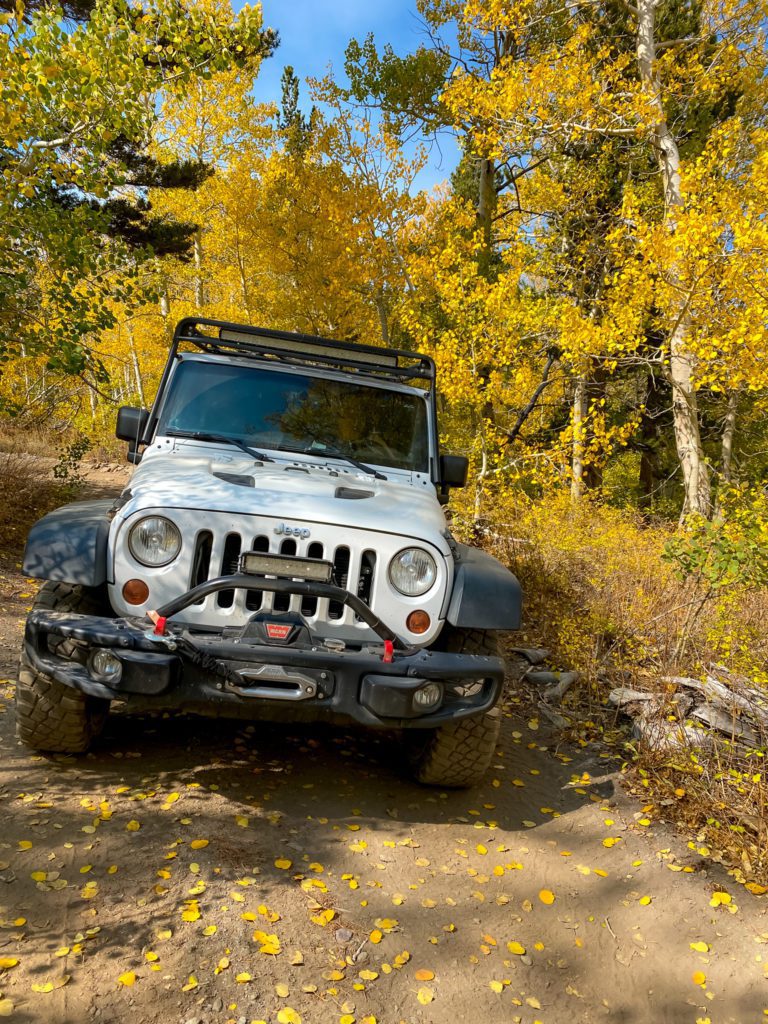
We worked together and ended up with an amazing day. I pinned locations on a map, Jared planned the route, Austin navigated and Shonna kept us all laughing and well-fed. Despite a late start, we visited nine sites around Conway Summit between Bridgeport and Mono Lake: Bridgeport Poor Farm, Ward Mining Camp, Kavanaugh Ridge, Dunderberg Mine and Munckton, Jordan, Conway Ranches, Monoville, and an unnamed site.
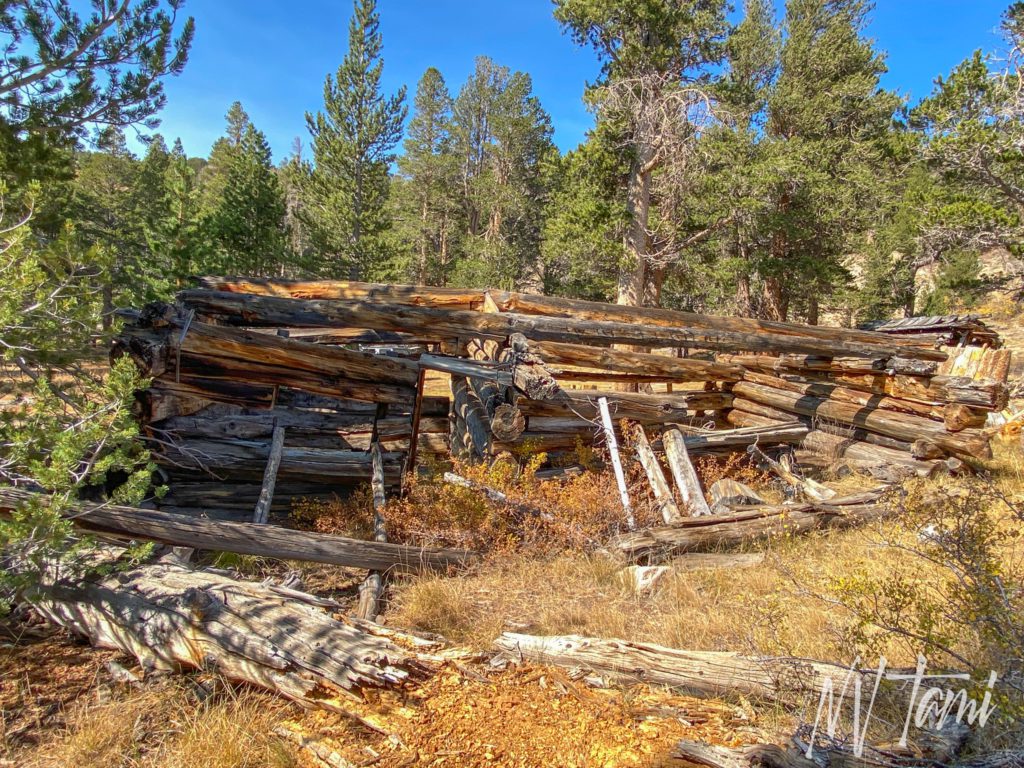
Ward Mining Camp was the highlight of the day. It is rare to find many standing structures, especially of log construction. We spent the bulk of the day exploring the ghost town and flying the drones.
Castle Peak Mining District
In 1867 Charles Snyder explored Dog Town Creek to locate the source of a placer gold nugget. The nugget was the largest discovered on the eastern slope of the Sierras, fourteen miles west of Bodie. He found quartz veins on Kavanaugh Ridge, dug a 40-foot tunnel, and transported three tons of ore to Aurora for processing. While his payout was only $150, it was enough for him to continue working the claim. In June of the same year, Snyder established the Castle Peak Mining District to protect his claim.
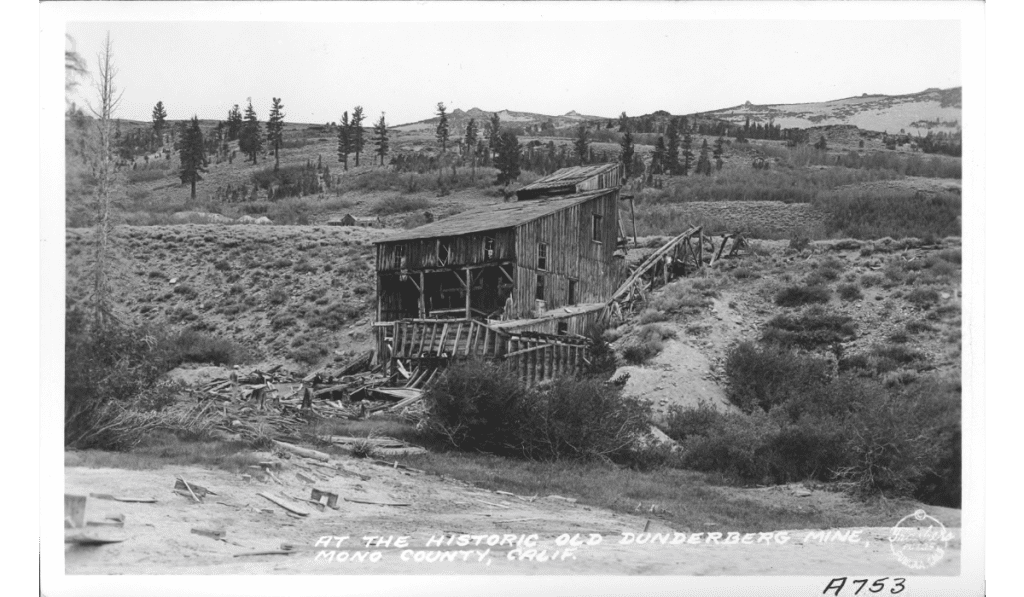
(Photo credit: Laws Railroad Museum)
Word of Snyder’s find spread, and soon additional mines were claimed. The settlement of Munckton grew above the beautiful Upper Sinnamon Meadow. A post office opened in 1871, and the town contained saloons, general stores, assay office, livery, boarding house, and a drug store. Due to high sulfide levels, processing ore was complex, and soon the mill ceased operation. Miners and merchants moved on to more prosperous mines, and the post office closed in 1872.
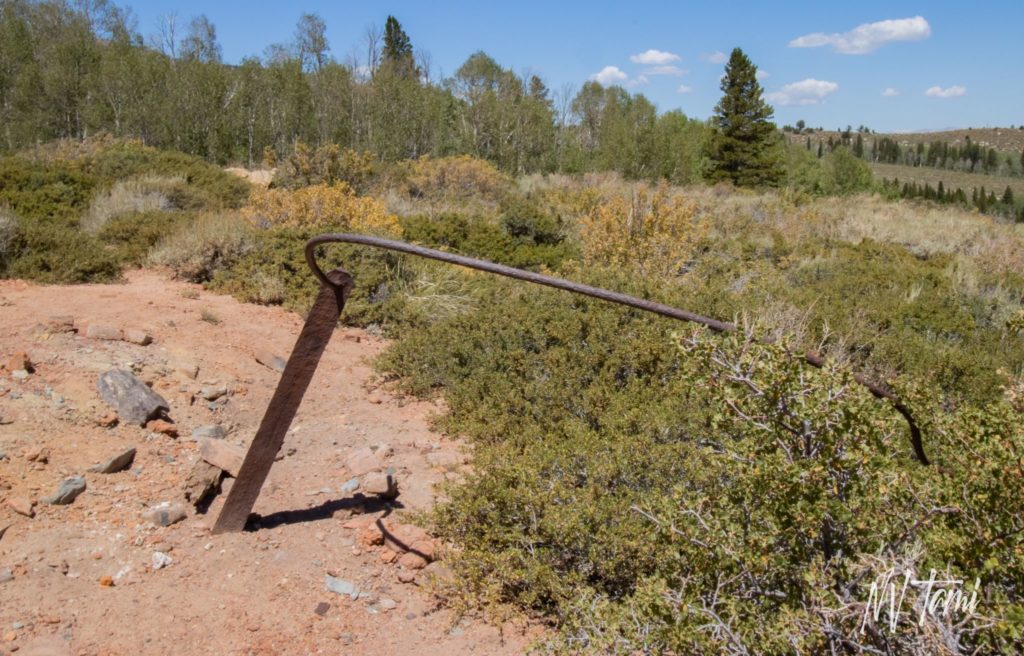
Ward Mining Camp
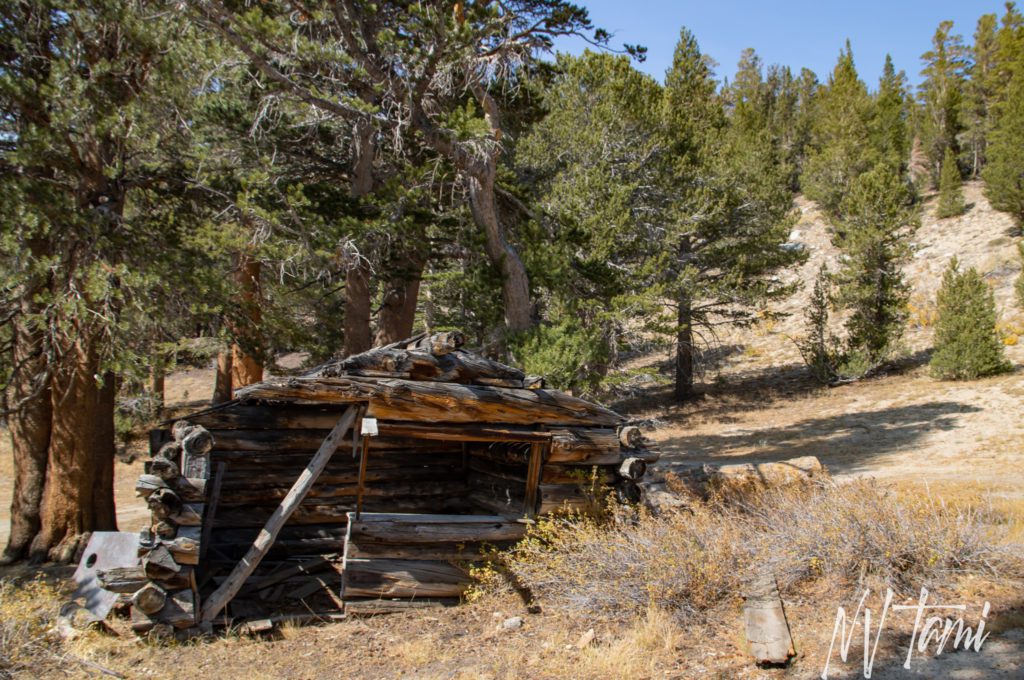
While Munckton was suffering multiple issues, miners explored the area around the town. They discovered promising ore around Green Creek and founded mining claims including Castle Peak, Ironside, and Bulkhead.
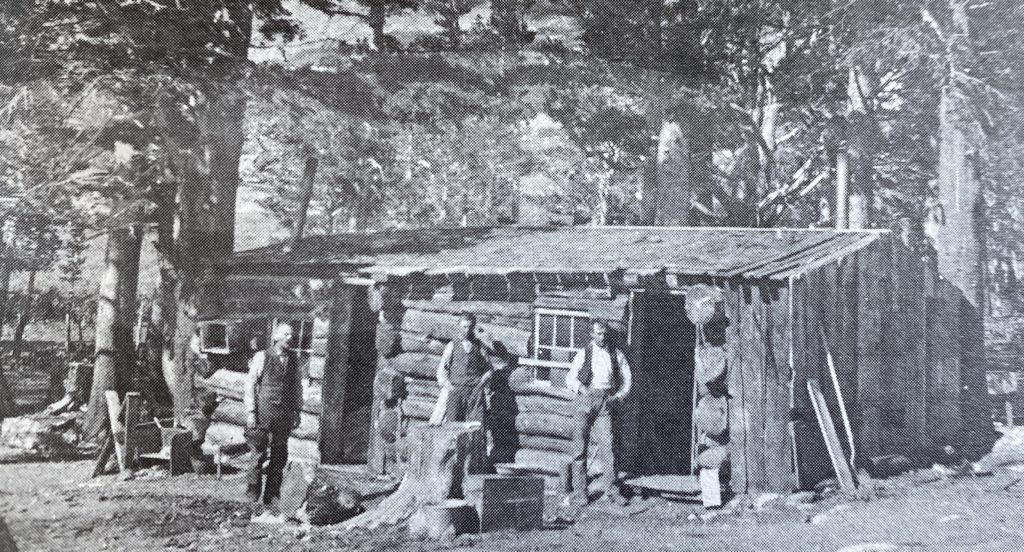
Thomas Ward developed a small settlement and constructed a four-stamp water-powered mill in 1892. The mill processed ore from local claims. Eight years later, the property and stamp mill came under the ownership of H.P. Hayes and Steve Kavanaugh, pictured above.
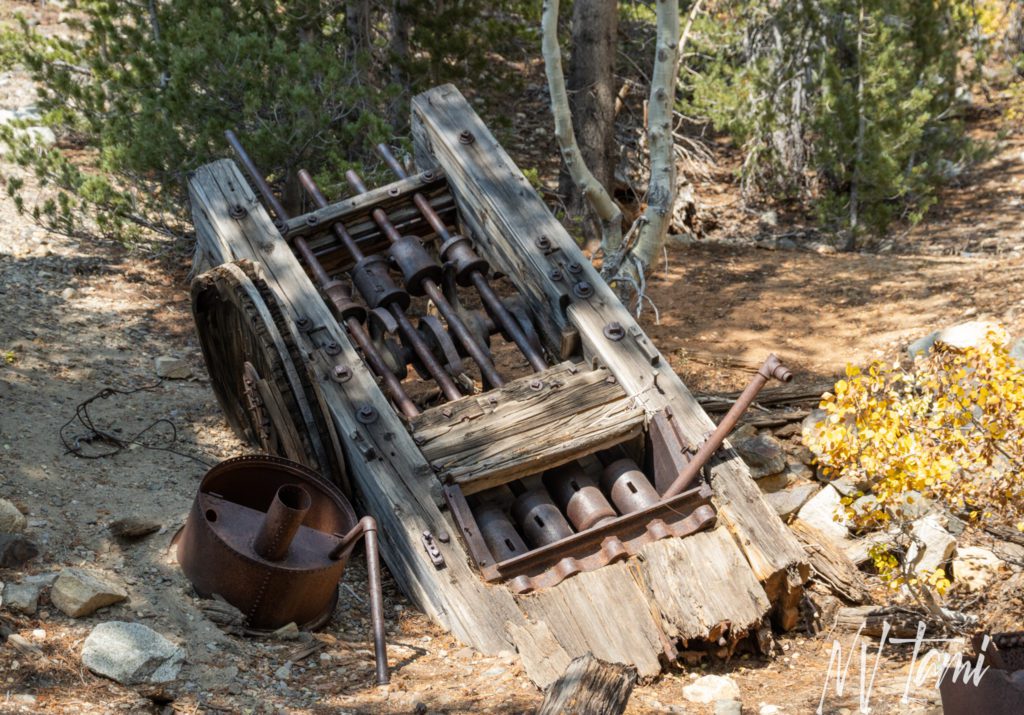
Ward Mine and Mill changed hands frequently. The last known owner of Ward was Ed L. Page. Ed had legs that were crippled, and he created crutches from sticks. He hobbled between the stamp mill and Ward Mine, over 2000′ feet, mostly vertical. He continued to work the mill until 1917.
Stamp Mills
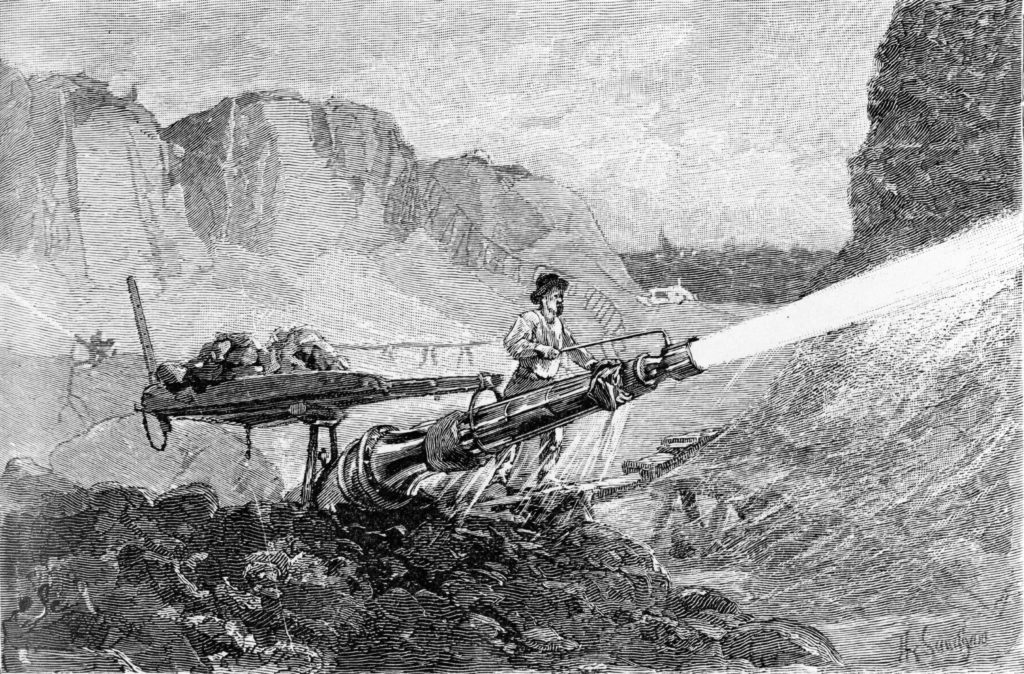
Hydraulic Mining c. 1883
(Photo credit: Wikipedia)
In 1883 the Sawyer Act outlawed hydraulic mining, and stamp mills became popular. Stamp mills have wood or metal beams that crush the ore. Each beam is a “stamp” lifted by cams on a horizontal rotating shaft. Stamp mills were often located on a hillside as they relied on gravity. As raw ore descended through the mill, stamps crushed it into smaller particles which are treated with cyanide or mercury. Freighting unprocessed ore could be cost-prohibitive; the milling process could increase the value of the shipping weight four to six times.
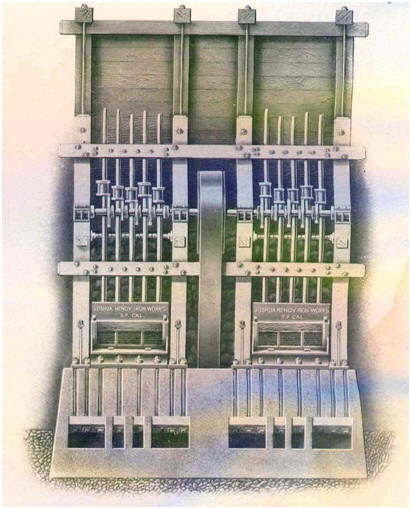
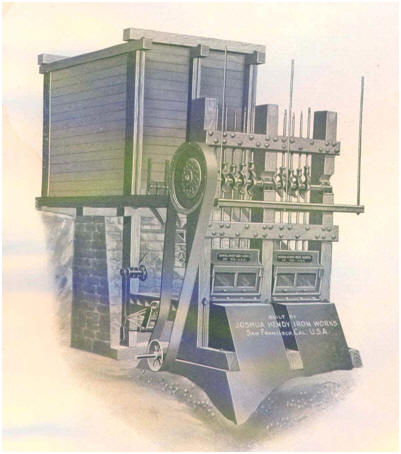
(Photo credits: MS Books and Mineral Company)
Ruins
Cabins

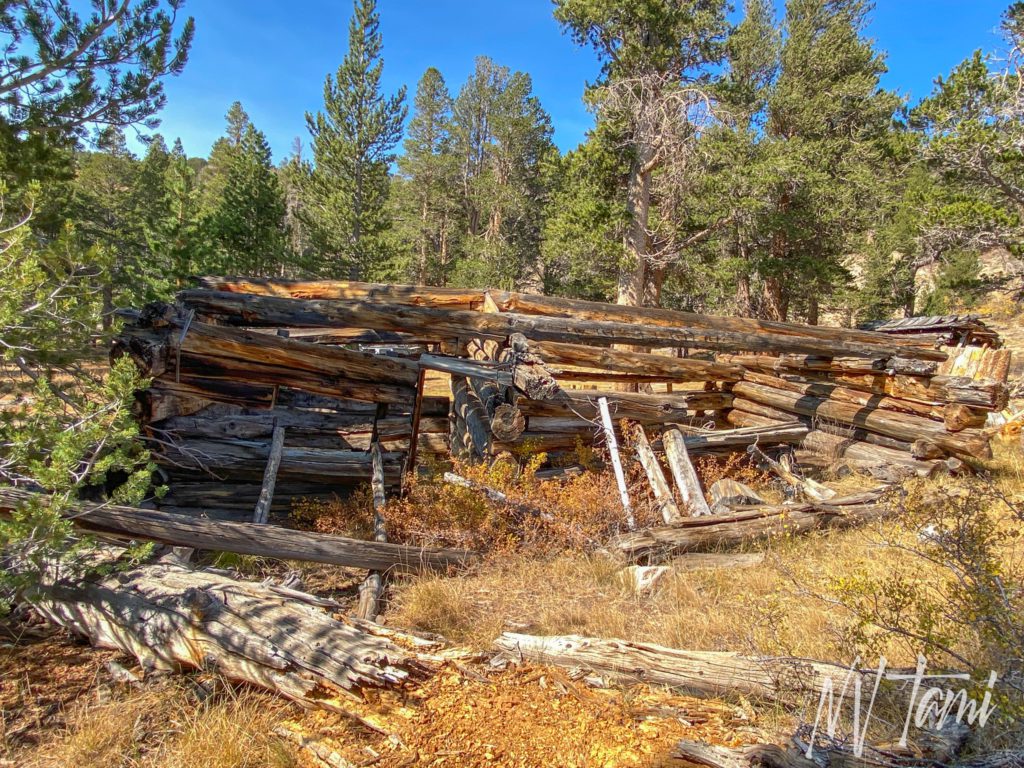
The three cabins are laid out across what appears to be an old mining road. One has a roof remaining, the second has walls standing, and the third has collapsed. In the picture above, you can match the logs on logs next to the left door.
Cabin 1

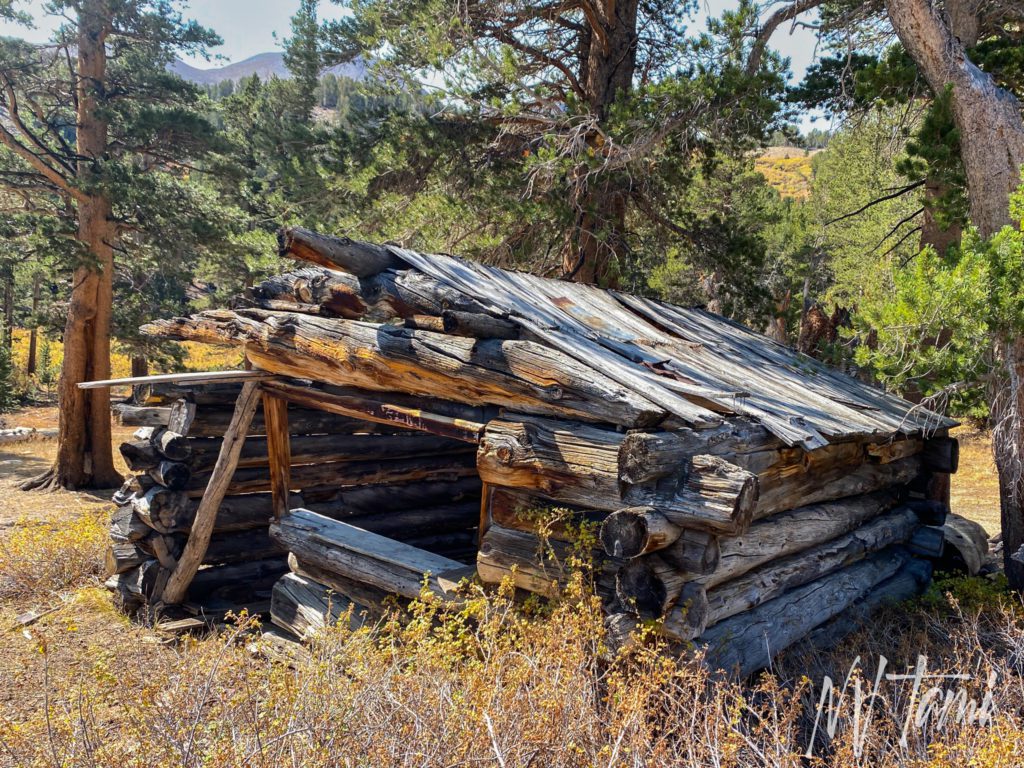

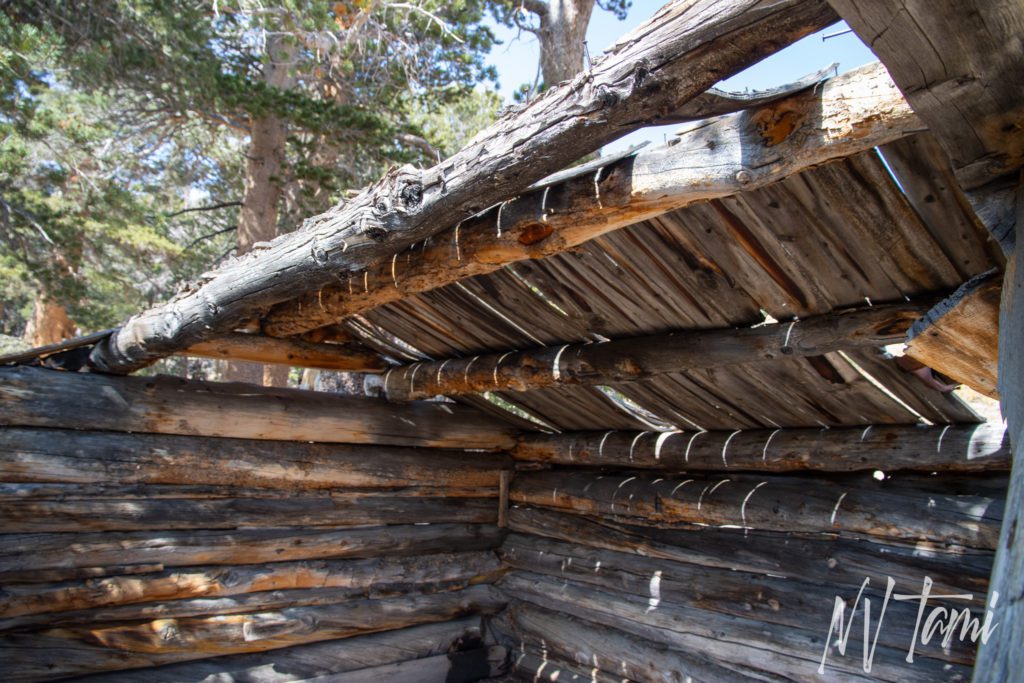
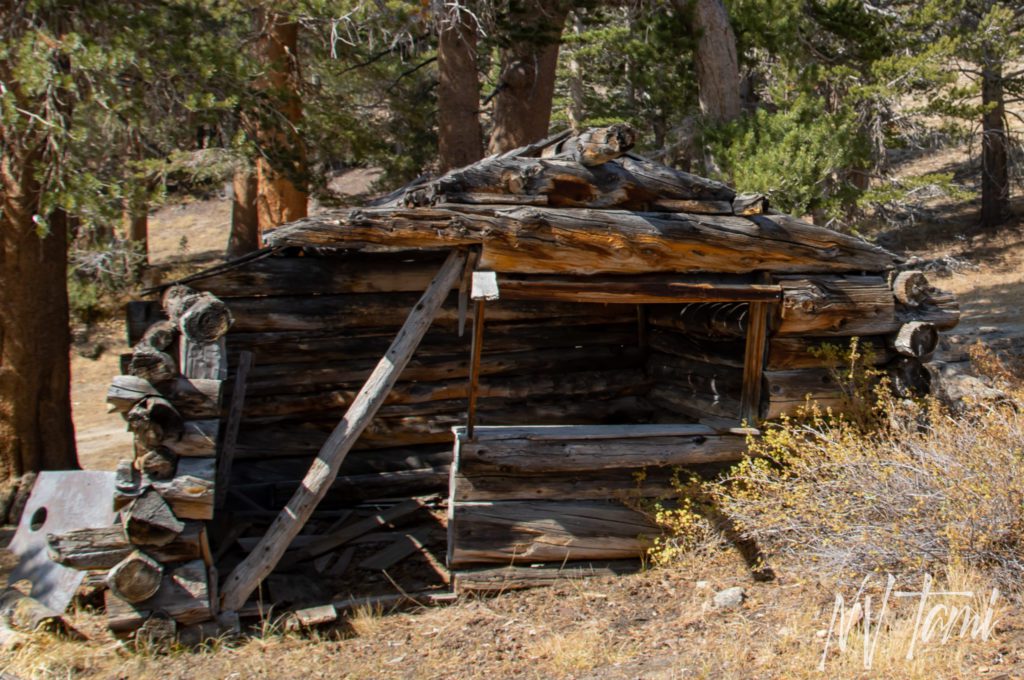
Cabin 2

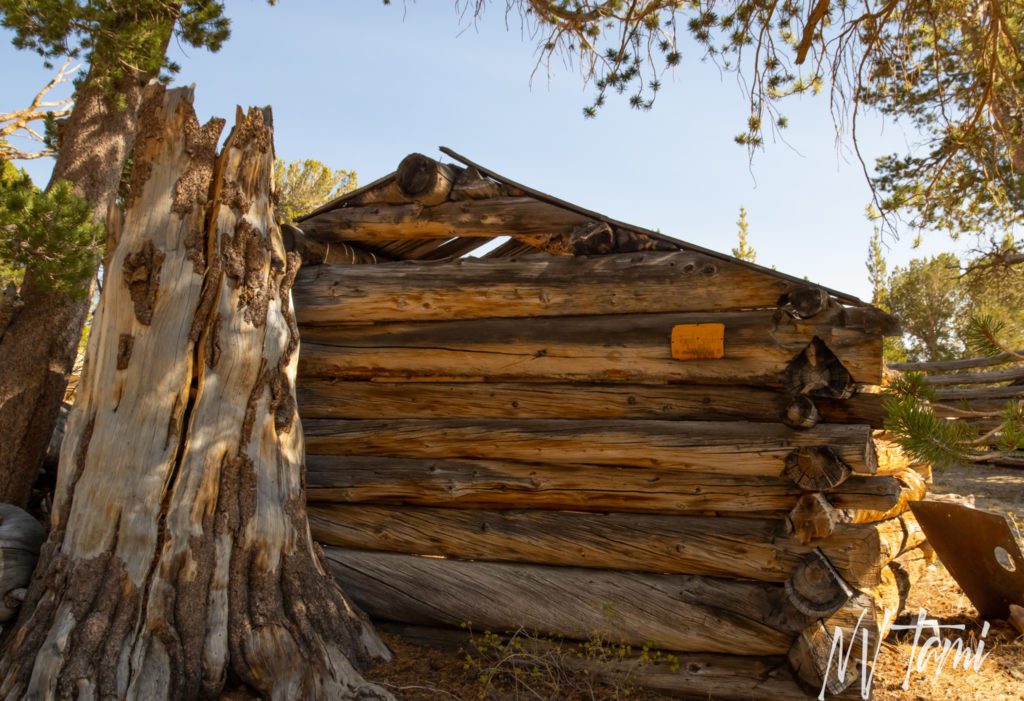
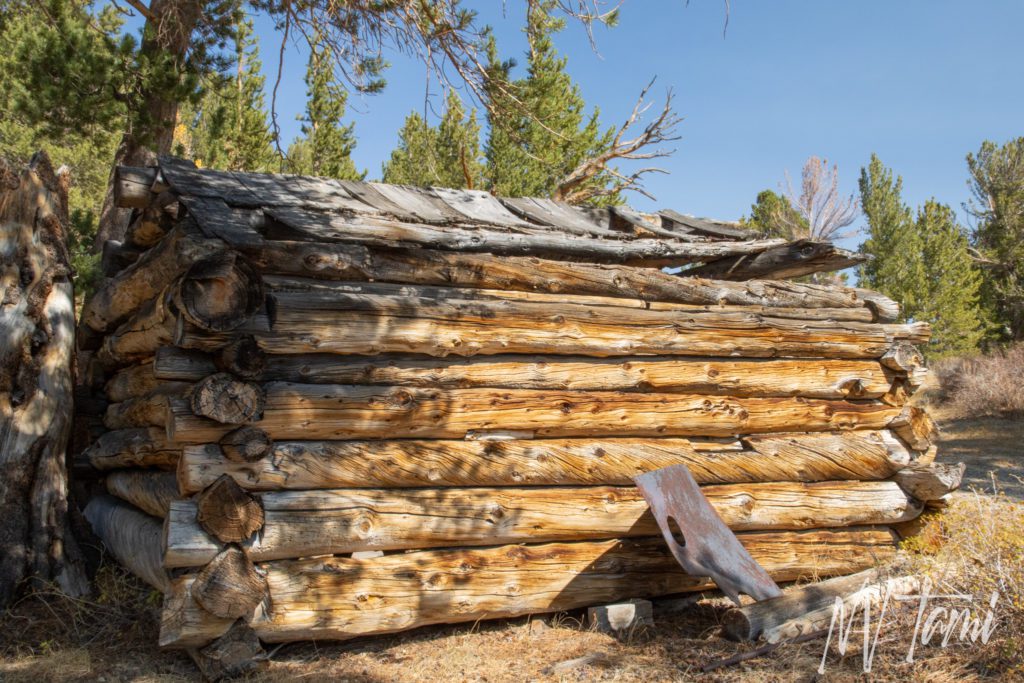
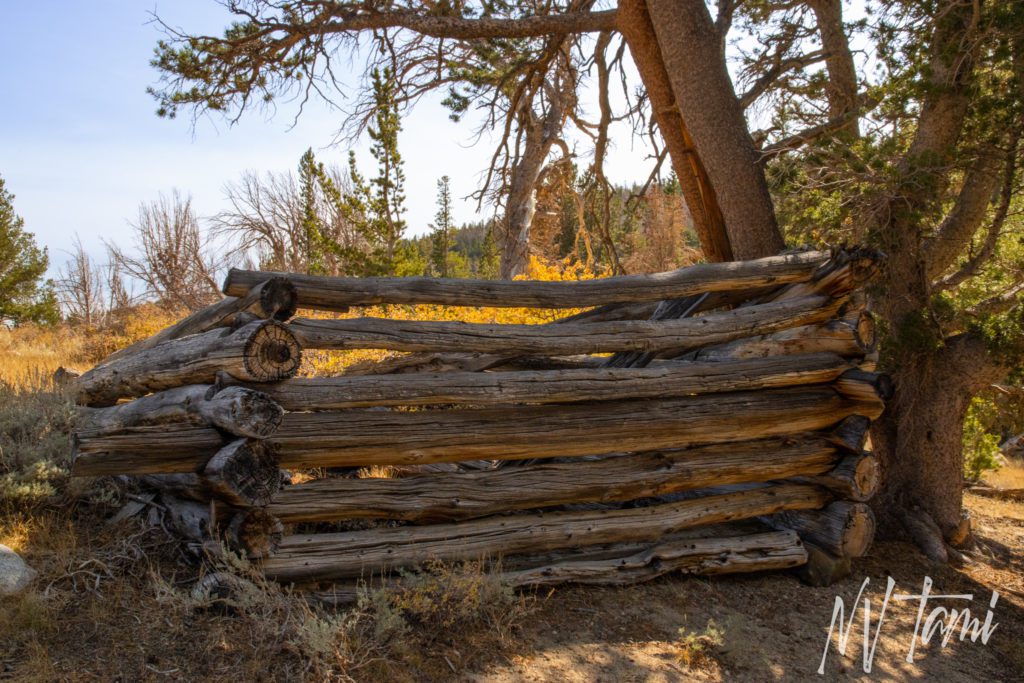
Cabin 3
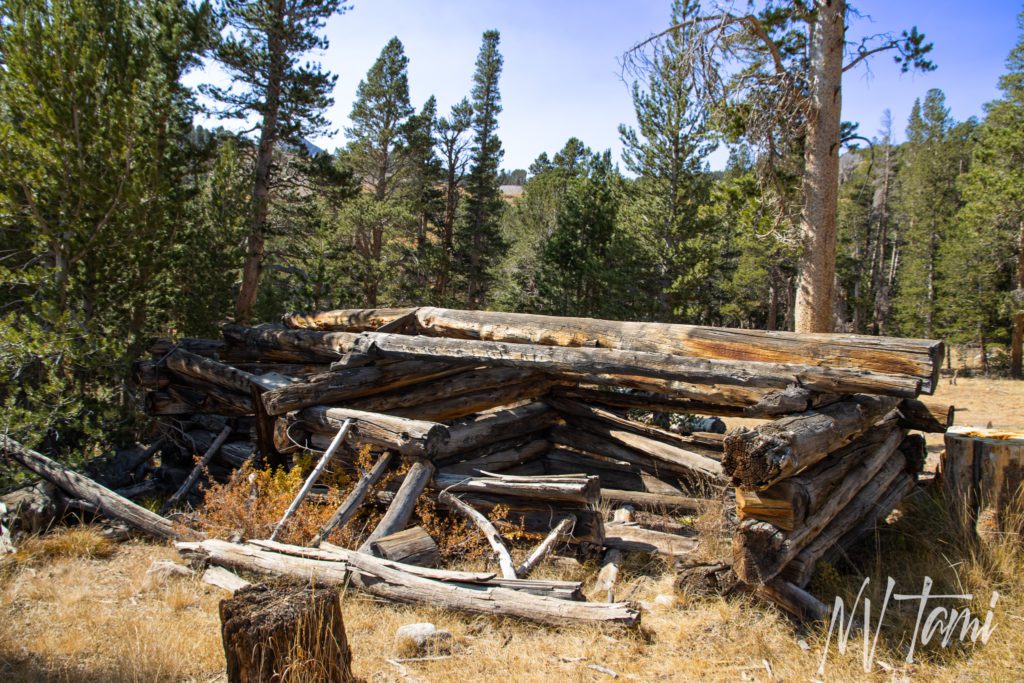
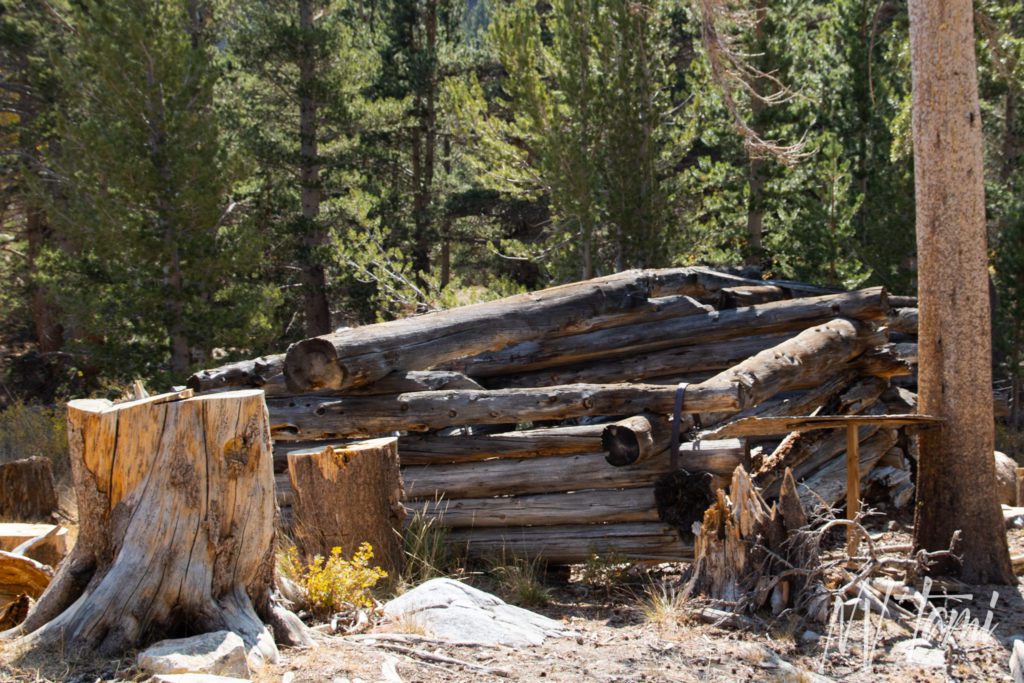
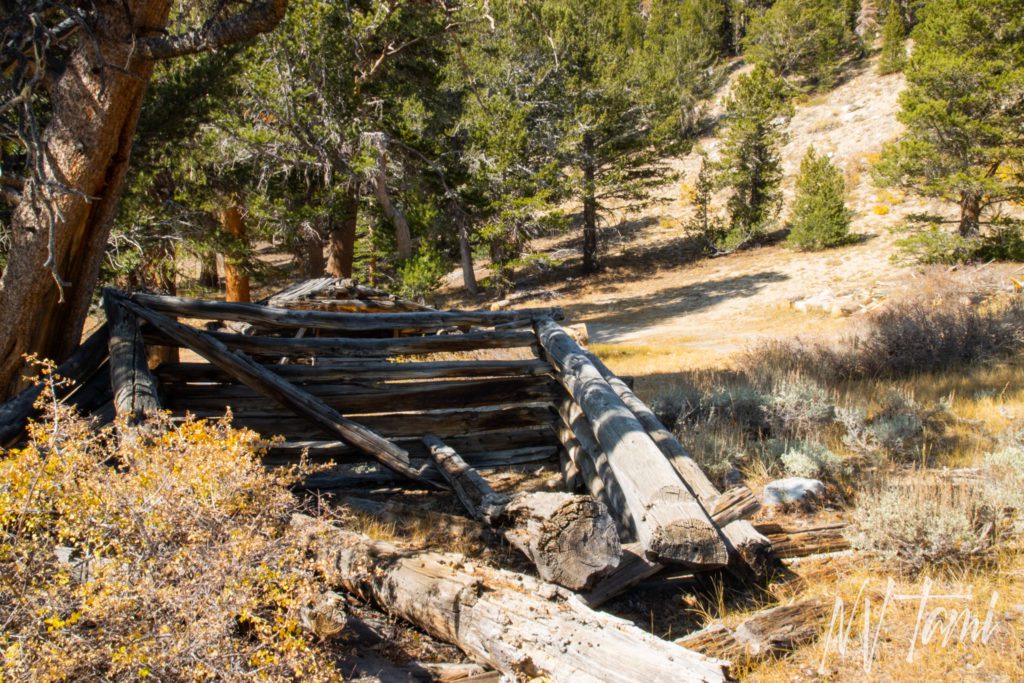
Four-Stamp Mill
Down the road from the mining camp is the four-stamp mill. Sadly, the mill has fallen over, but the workings are intact.
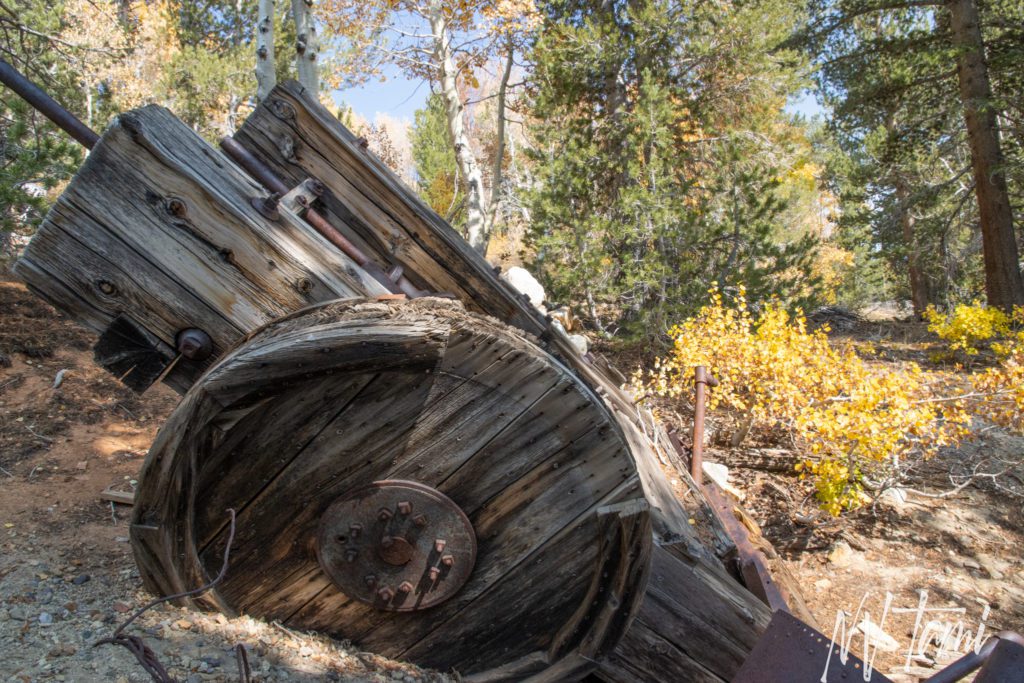

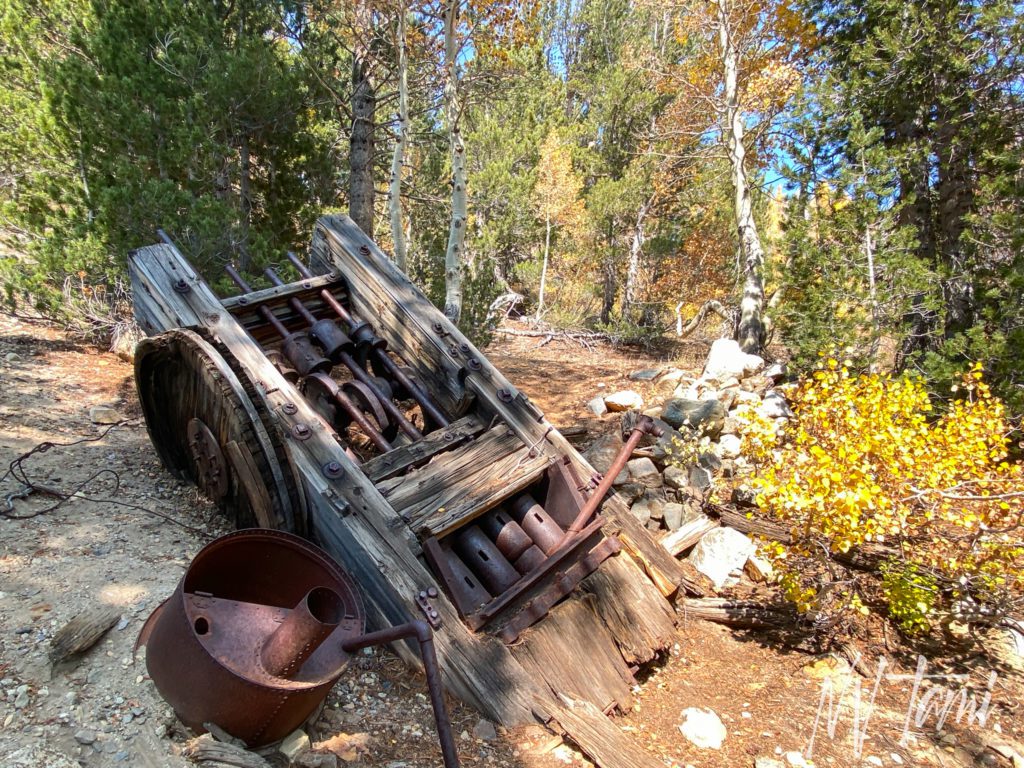
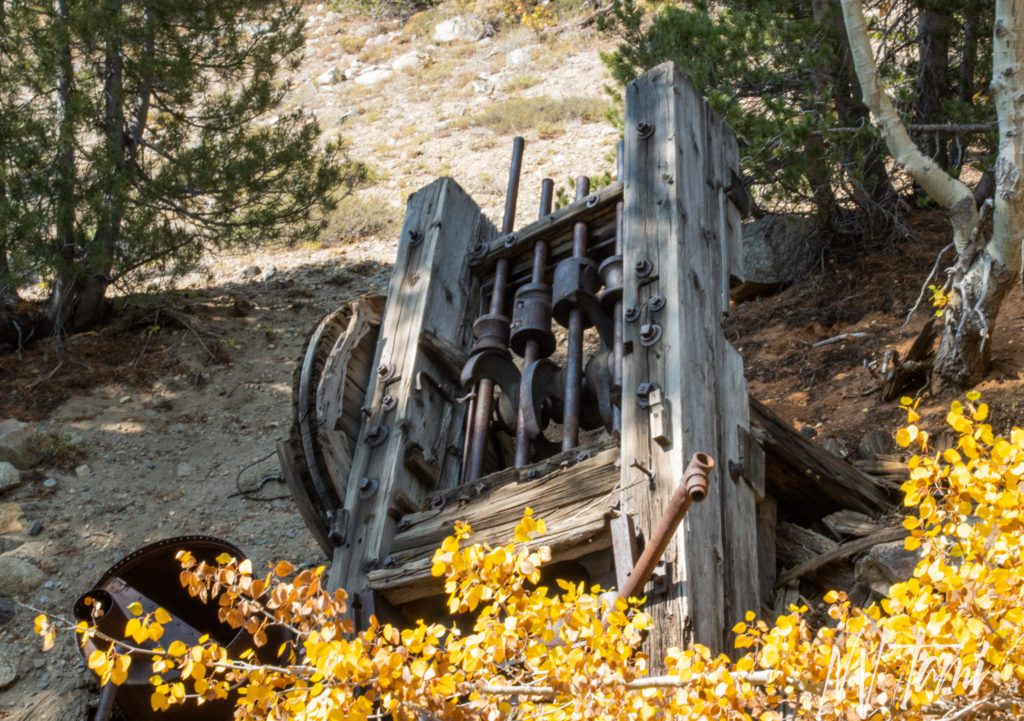
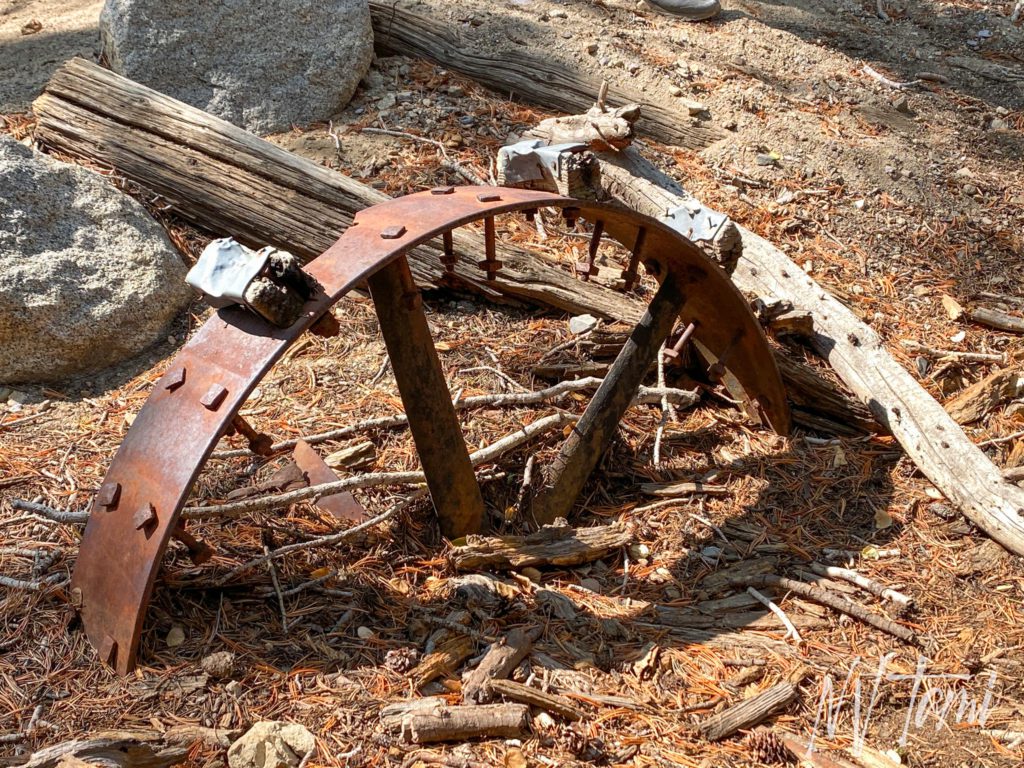
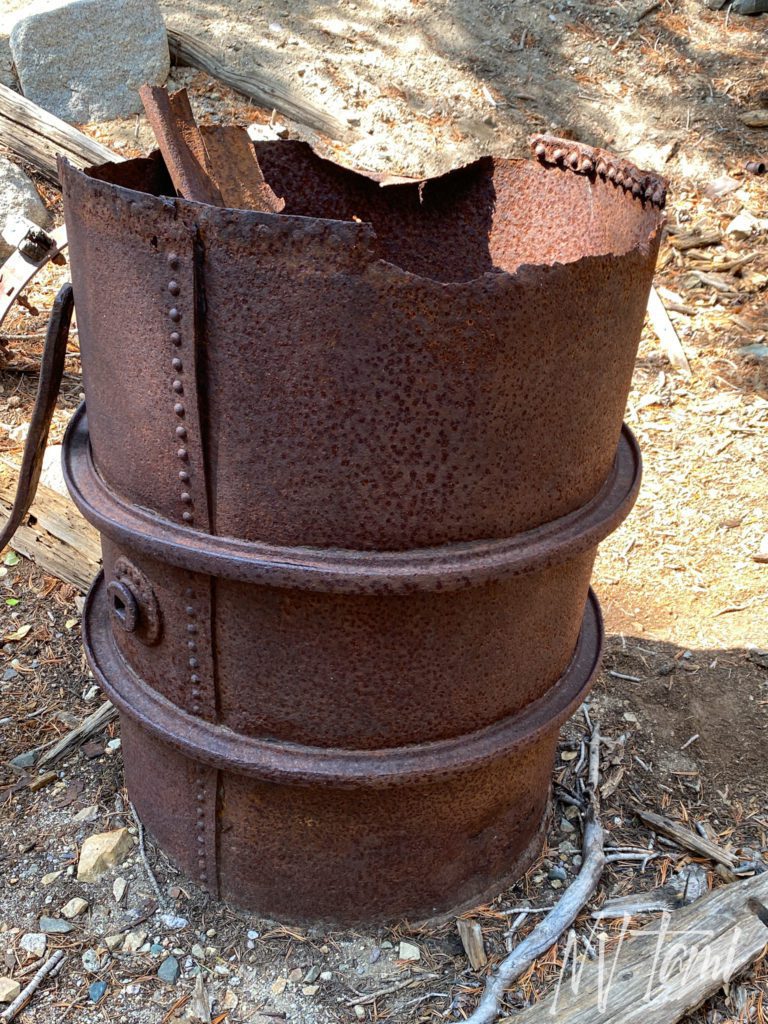
Rock Foundation
Across the road from the cabins are the remains of a rock foundation.

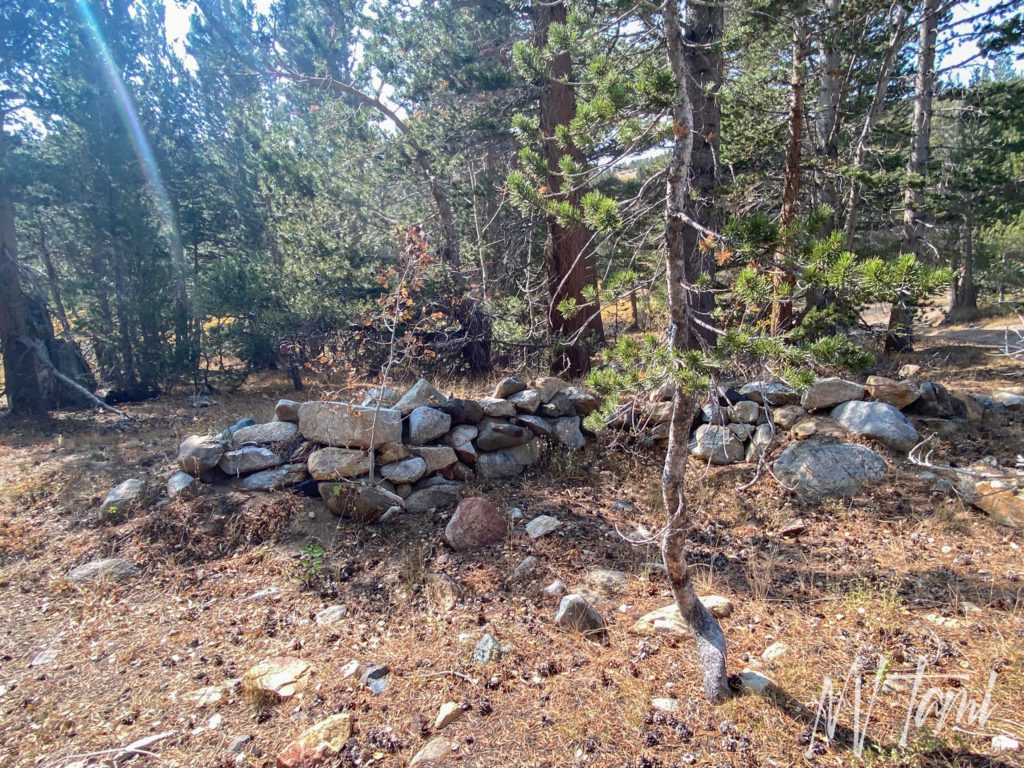
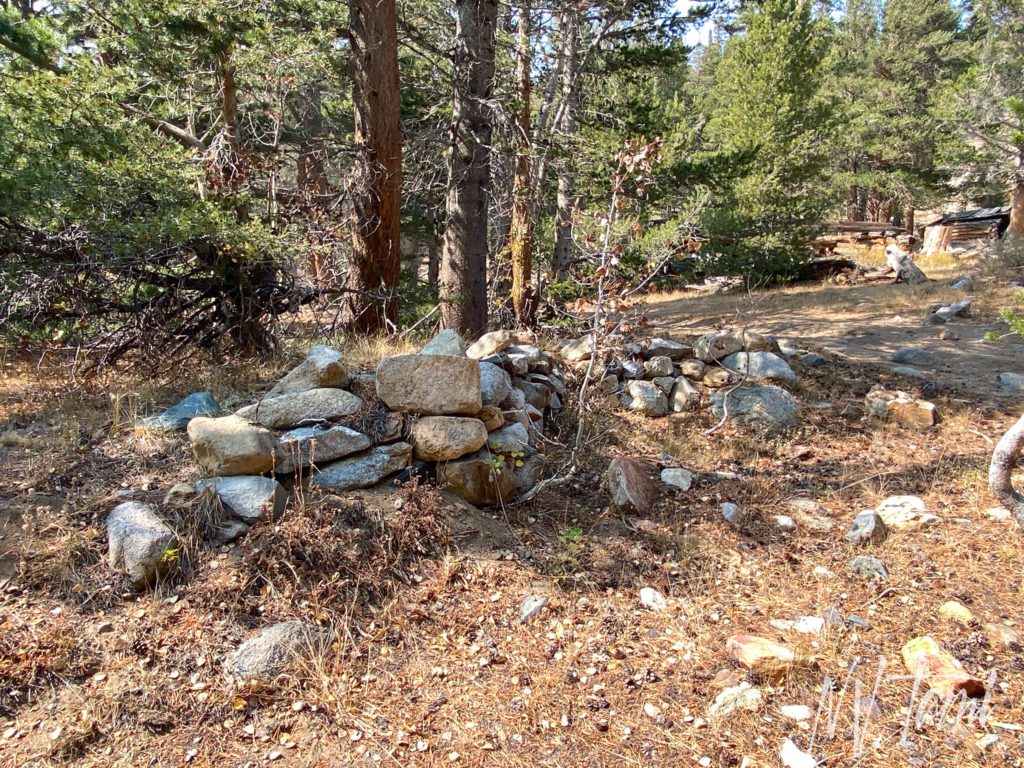
Kavanaugh Ridge
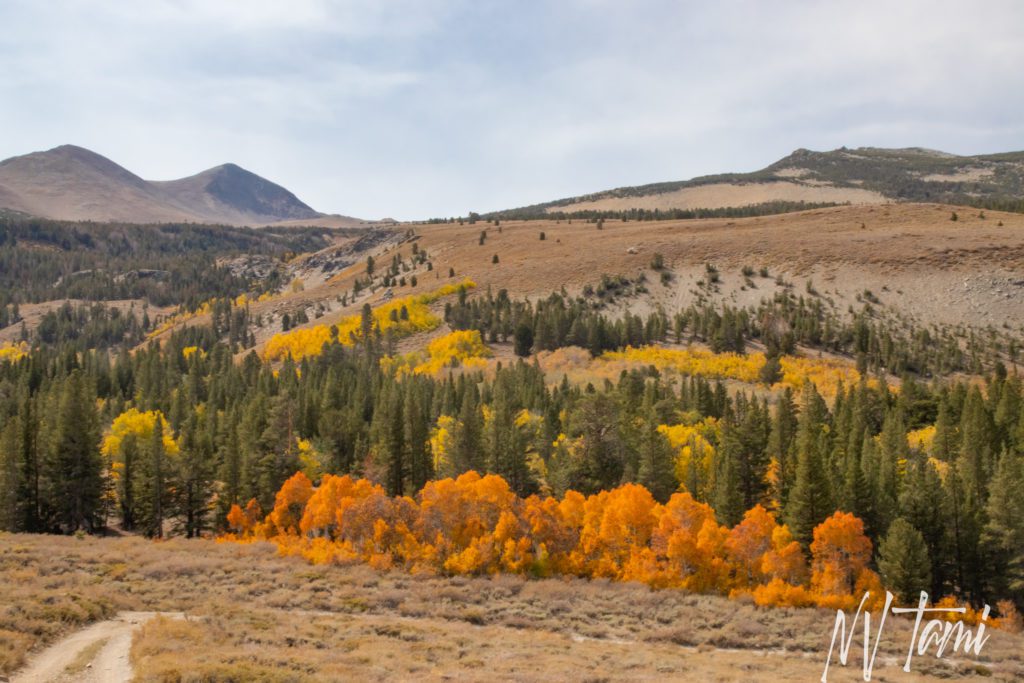
Jared flew his drone over the 10, 980′ Kavanaugh Ridge and to the lakes below. I wasn’t that brave because if the drone caught a gust or ran low on power and made an emergency landing there was no way we were getting it back. There was smoke from the fires but the view was stunning.
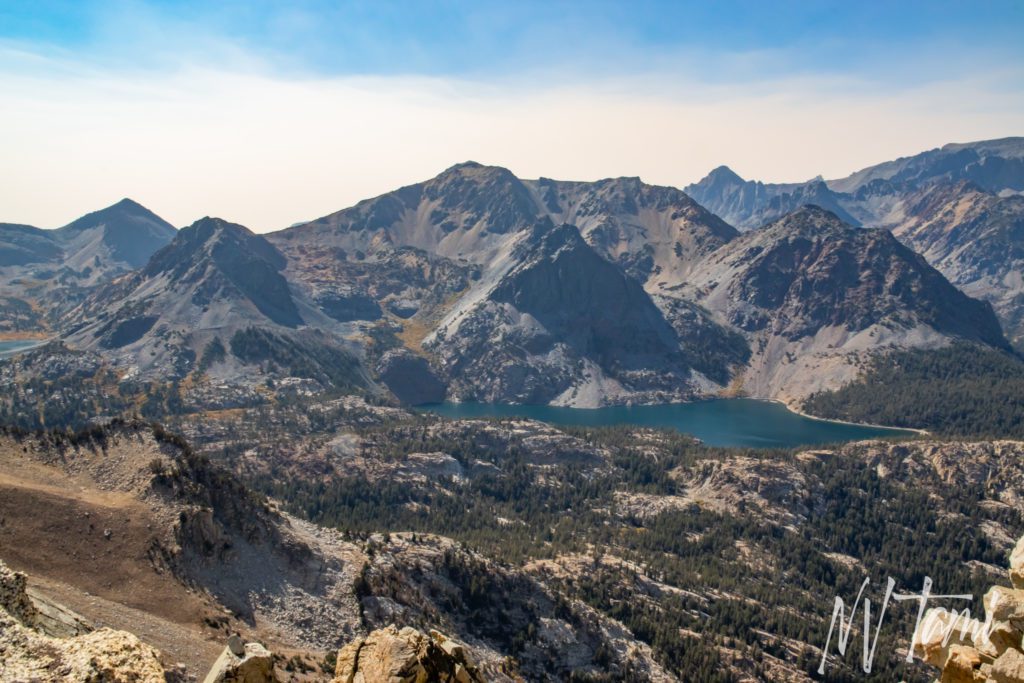

Jared’s Done over Kavanaugh Ridge, Shonna and Austin relaxing

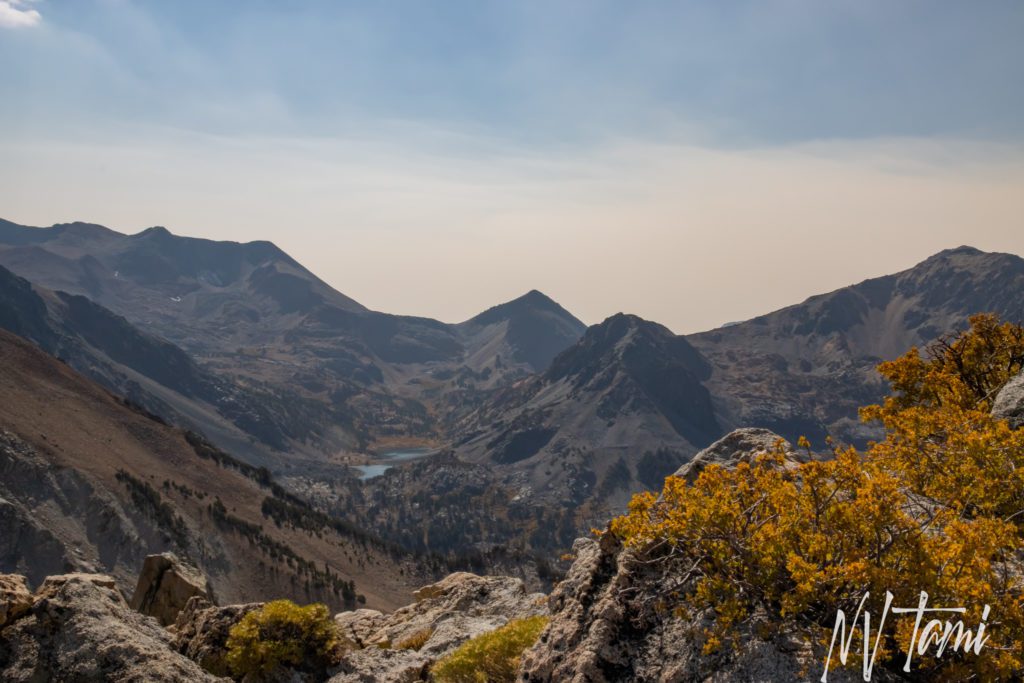
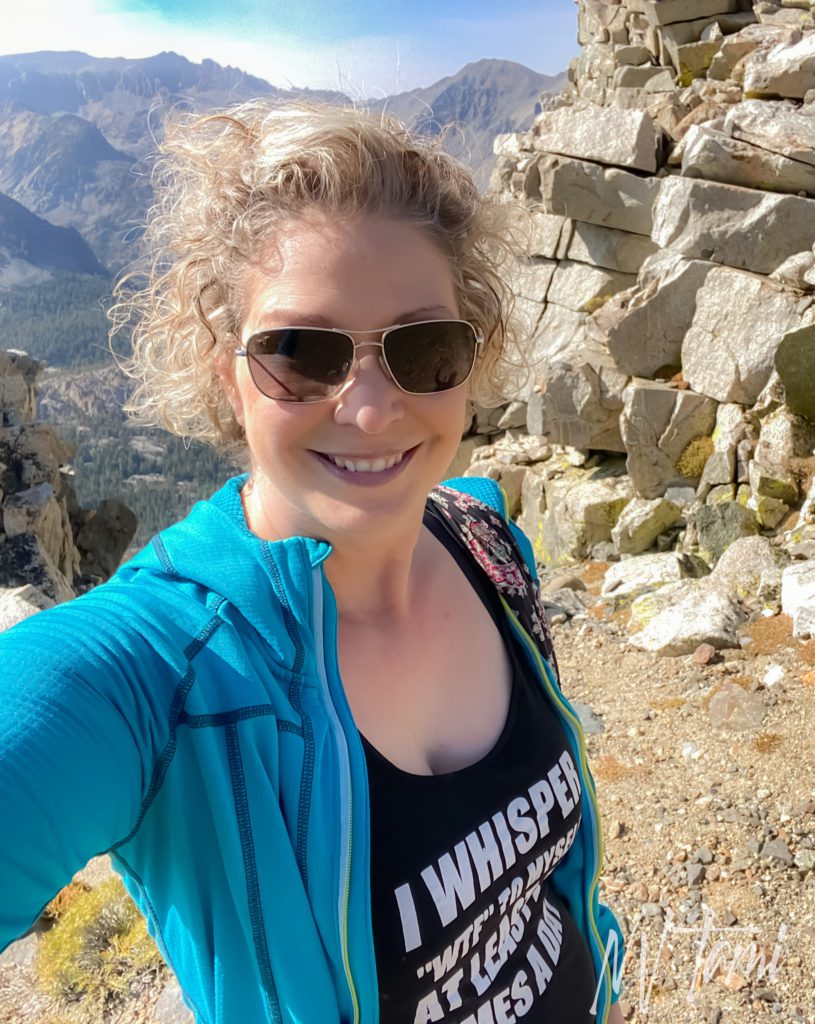
The ridge was cool and breezy, a nice break from the heat
10-2-2022
References
- California Bureau of Mines. Mines of Alpine, Inyo and Mano Counties, California. California Bureau of Mines, 1917. Pages 162-163.
- Ghost Towns: Dunderberg
- Minedat: Ward Mine
- Mitchell, Roger. High Sierra SUV Trails Volume 1, The East Side. Track and Trail Publications, 2002. Pages 109-113.
- Mitchell, Roger. Inyo-Mono SUV Trails. Track and Trail Publications, 2003. Page
- Mono County: Mining Operations
- Sally, H.E. History of California Post Offices. The Depot, 1991. Page 139, 226.
- Wedertz, Frank S. Mono Diggings: Historical Sketches of Old Bridgeport, Big Meadows and Vicinity. Chalfant Press, 1978. Pages 138-143.
- Western Mining History: Ward
judy wickwire says
Tami
Fabulous photos. Documenting these treasures is so important. Your trips allow the rest of us to enjoy
the backroads and our history. You educate all of us.
Thanks Judy Warren-Wickwire
Tami says
Thank you so much Judy! I love the work you and Karen do preserving Carson Valley and Alpine County history. They are my first references for those areas.
Tanya Steele says
Thank you! Very well done! I admire your sense of resourcefulness in sharing the history. I would love to visit This place. How exactly do we find the location?
Tami says
Thank you, I am glad you enjoyed it.
For a variety of reasons, mostly to protect the sites, I do not give specific locations of ghost towns. Some great places to start are local mining and history books and trail guides.
Lewis says
Kavanaugh Ridge and Ward haven’t changed much since I was there a few years back. There are more secrets to that area ;). Stamp mills, not totally correct. The ore was not crushed to a powder. Could you imagine the dust if it was! In the stamp battery water was added, the mush flowed out of the battery through a screen onto copper plates where mercury was added to the mush. The gold attached to the mercury on the copper plates. Cyniade process came later.
Tami says
I’m glad they haven’t changed much, hopefully, that continues. I look forward to exploring the area more, I already have a few spots on my radar.
I had been told the ore was crushed to a powder, but you are correct that doesn’t make sense. I did research and changed it to smaller particles of ore. Thank you for the catch.